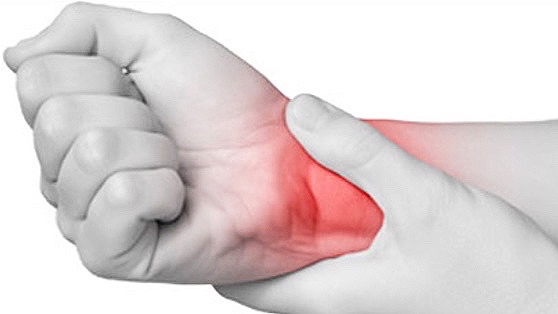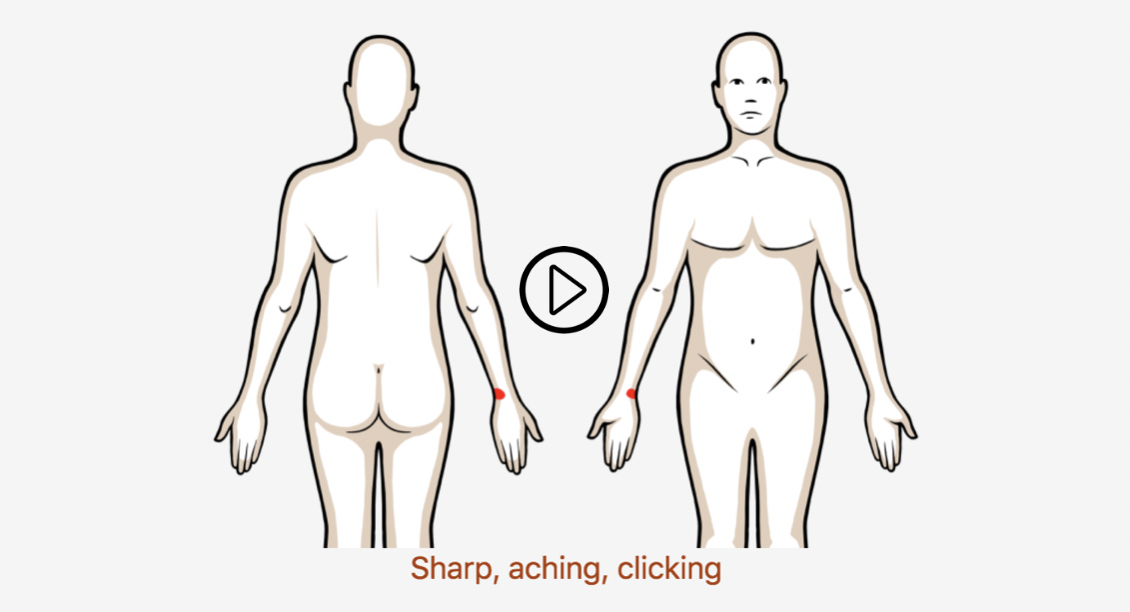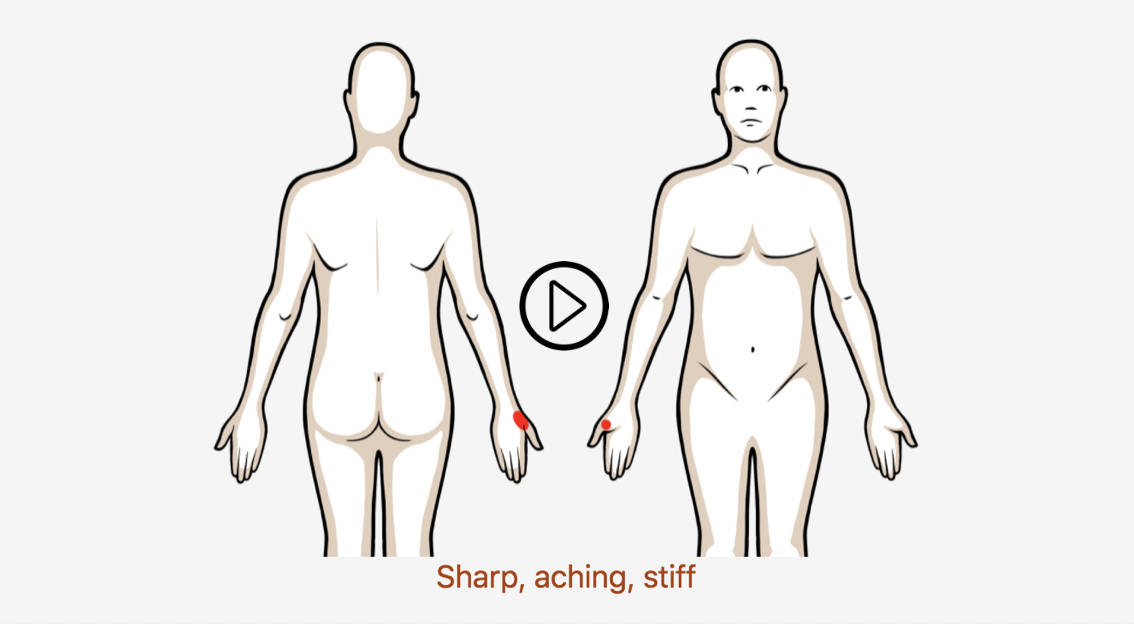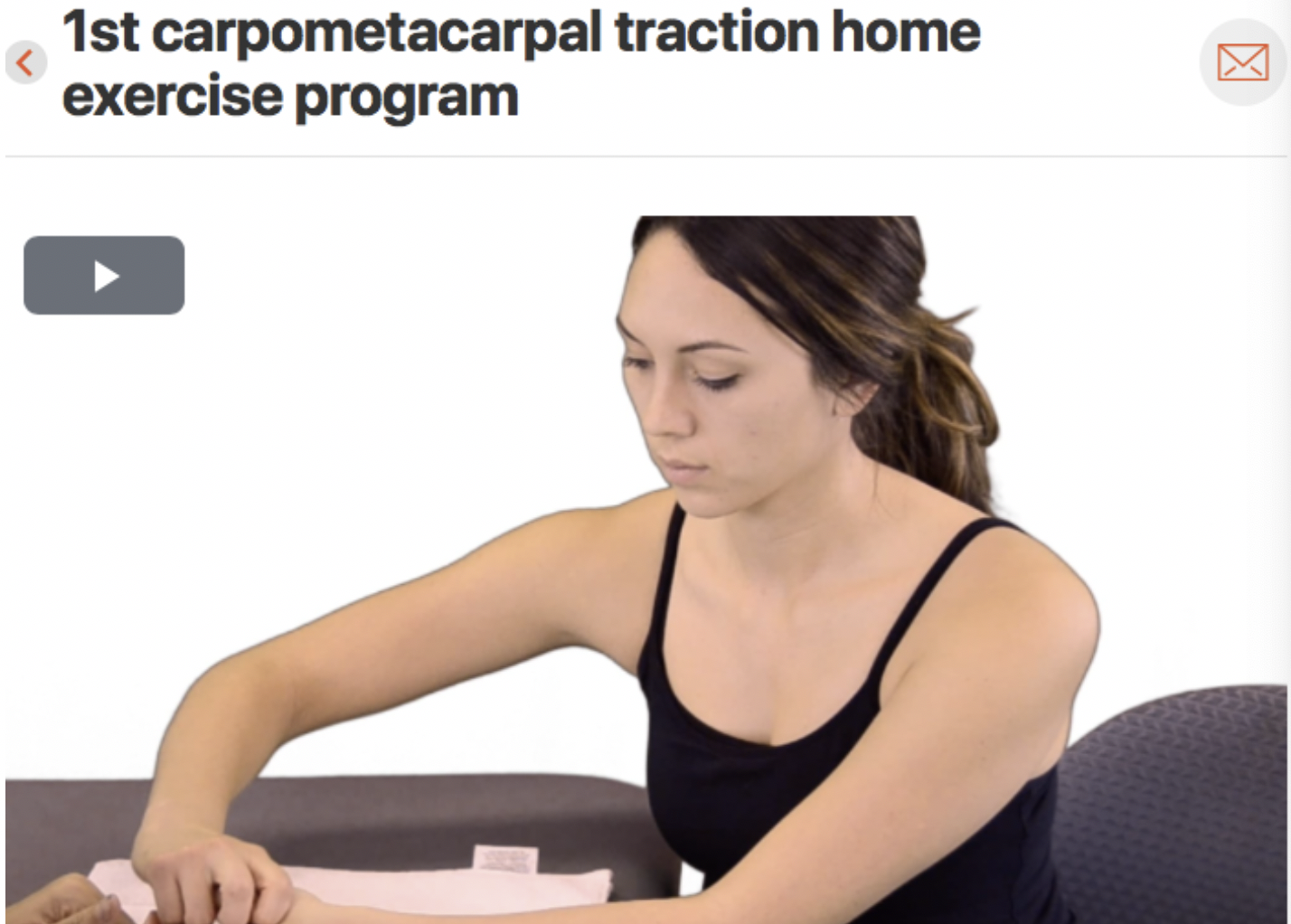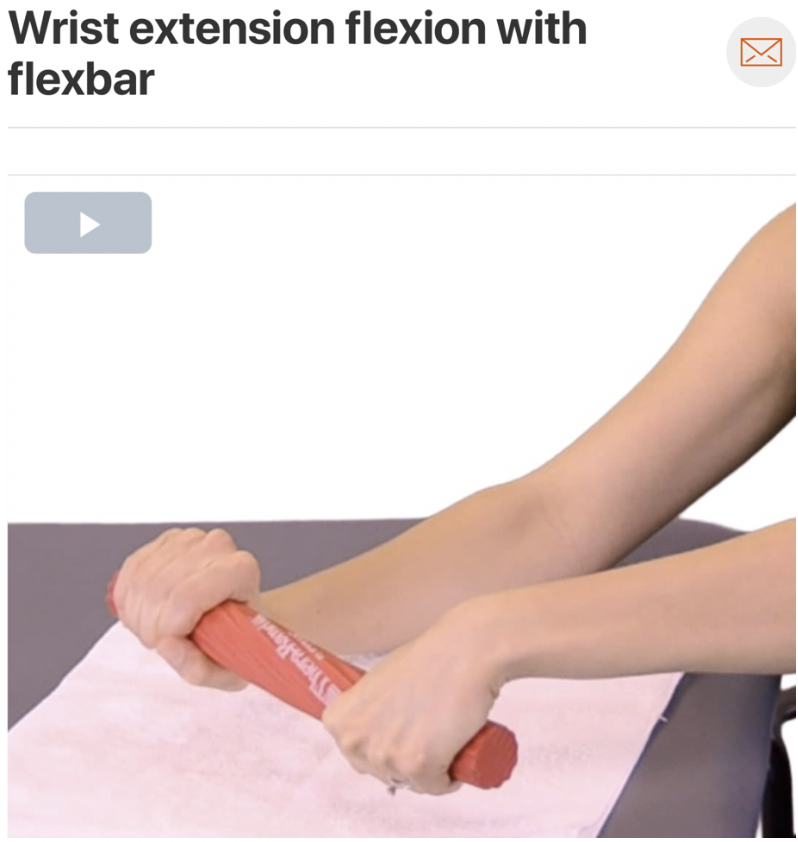From anatomy to discovering the patient!
Carpal tunnel syndrome is the most common upper extremity compressive neuropathy
o 1 to 5% of general population
There were 11,332 cases of DeQuervain’s tenosynovitis in the population at risk of 12,117,749 person-years
Women had a significantly higher rate of DeQuervain’s tenosynovitis at 2.8 cases per 1000 person-years, compared to men at 0.6 per 1000 person-years
Triangular fibrocartilage complex (TFCC) was torn in 46 of 118 patients with distal radial
fracture
o 35% of intra-articular fractures
o 53% of extra-articular fractures
In 59 hands with carpal tunnel syndrome, 34% also had ulnar tunnel (Guyon’s canal) neuropathy
See more prevalence information in the Clinical Pattern Recognition: Orthopaedics app here
Clinical Pattern Recognition
Click on the pain pattern to learn about the patients and develop your clinical patterns!
Carpal Tunnel Syndrome- Hand Sensory Deficits (1-minute video)


